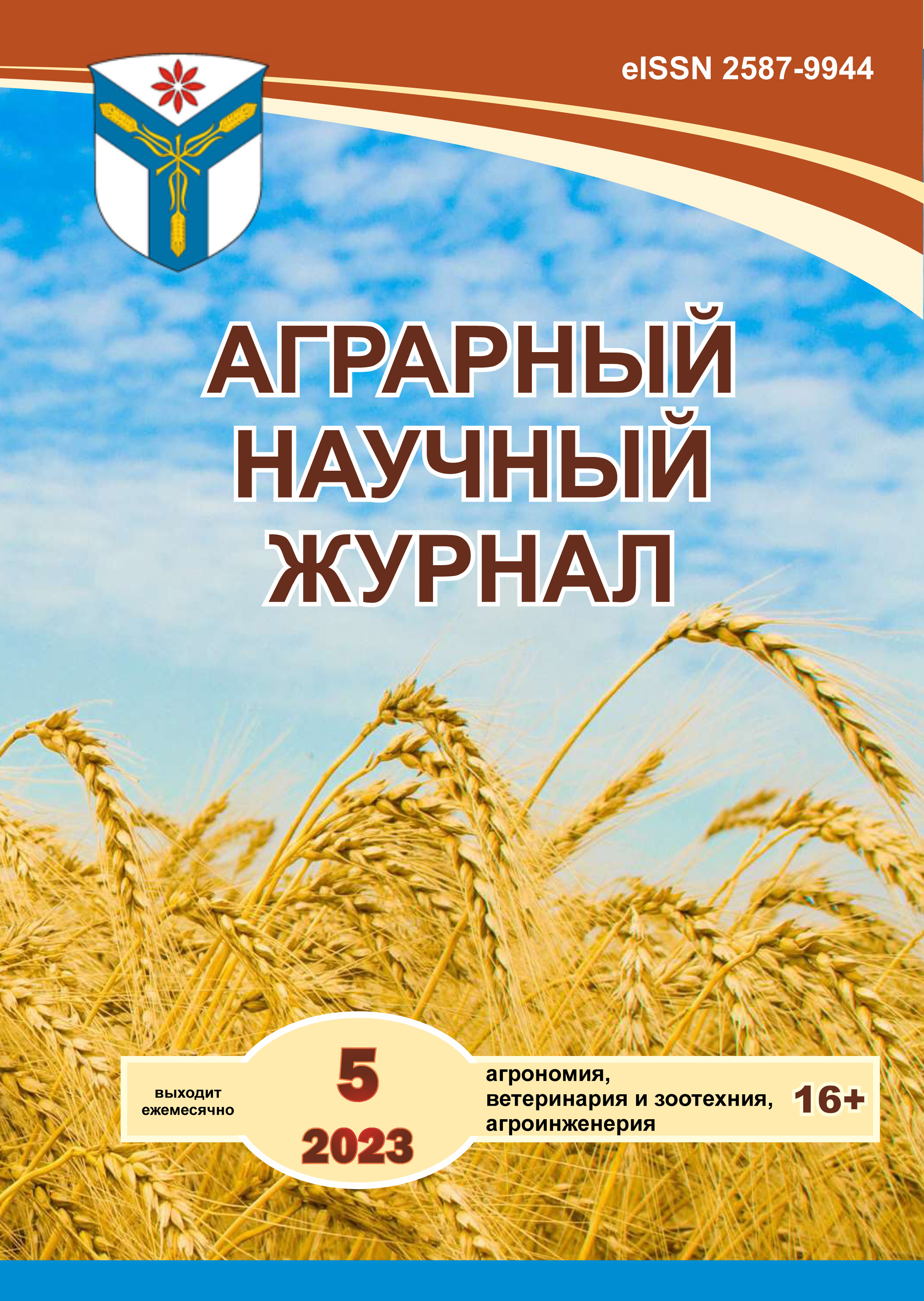On the issue of assessing decorative qualities cut varieties of hybrid tea roses when grown on hydroponics
DOI:
https://doi.org/10.28983/asj.y2023i5pp33-40Keywords:
hybrid tea rose, variety, Naomi Red, Avalanche, decorative, terry, low-volume hydroponicsAbstract
The rose is a leader in the cultivation of cut crops, the decorativeness of which is beyond doubt. Increasing the attractiveness of bouquet flowers is a priority task of modern industrial floriculture. A number of plant growth regulators can significantly improve the decorative qualities of flower-cutting products. During the research, it was proved that immunomodulatory with protective functions significantly increased the valuable decorative and economic properties of varieties of hybrid tea roses grown on low-volume hydroponics. With three-fold treatment of rose plants with Epin-extra, an increase in the size of the flower and its terry was noted. The burgundy-red variety Red Naomi was less exposed to the insolation of sunlight and retained the typical color for this variety. The use of a growth regulator increased the length and strength of the peduncle. The tea-hybrid rose of the Avalange variety significantly increased the duration of the bouquet in the vase. In the course of the experiment, we modified the scale of the score assessment of decorative tea-hybrid roses grown on low-volume hydroponics, more adapted to assess the most important economic qualities of the cut crop.
Downloads
References
Азиева И. А., Боровой Е. П. Технология выращивания роз в теплице // Интеграция науки и производства: материалы Междунар. науч.-практ. конф. Волгоград, 2013. С. 193–196.
Бочкова И. Ю., Хохлачева Ю. А. Оценка влияния фактуры на декоративные качества цветочных растений в системе озеленения города // Вестник Московского государственного университета леса – Лесной вестник. 2015. Т. 19. № 5. С. 102–106.
Бударин А. А., Коробов В. И. Совершенствование методики комплексной сортооценки садовых роз // Плодоводство и ягодоводство России. 2008. Т. 19. С. 28–32.
Джиоева А. И., Босиева О. И. Голландская технология выращивания розы в ООО «Агростандарт Союз» // Студенческая наука – агропромышленному комплексу. Владикавказ, 2017. С. 86–89.
Гиль Л. С., Пашковский А. И., Сулима Л. Т. Современное овощеводство закрытого и открытого грунта. Практическое руководство. М. : Рута, 2012. 468 с.
ГОСТ 18908.1–2019. Цветы срезанные. Розы. М. : Стандартинформ, 2019. 10 с.
Карпухин М. Ю., Юрина А. В., Кирсанов Ю. А. Способ выращивания растений в теплицах. Патент на изобретение RUS 2299539 11.10.200.
Klemeshova K. V., Budarin A. A., Karpun N. N.Methodology for comprehensive assessment of decorativeness in garden-park roses from multi-flower and cover-ground functional groups under the conditions of Russian humid subtropics // Subtropical and Ornamental Horticulture. April 2020. P. 96–111.
Мацнева А. Е. Методика сравнительной сортооценки декоративных культур // Тенденции развития науки и образования. 2020. № 63-1. С. 14?18.
Методика проведения испытаний на отличимость, однородность и стабильность. Роза (Rosa L.). М. : ФГУ «Государственная комиссия Российской Федерации по испытанию и охране селекционных достижений», 2007. 21 с.
Найда Н. М., Дюндиков Е. Э. Сравнительное анатомическое исследование вегетативных органов двух сортов роз // Известия Санкт-Петербургского государственного аграрного университета. 2022. № 1(66). С. 17–28.
Плугатарь С. А., Клименко З. К., Зыкова В. К. Модифицированная шкала декоративной ценности чайно-гибридных роз для использования в озеленении // Бюллетень ГНБС. 2018. Вып. 126. С. 37–42.
Роль регуляторов роста в снижении ксенобиотического воздействия пестицидов в культуре чайно-гибридной розы / Д. Н. Плешаков [и др.] // Аграрный научный журнал. 2022. № 11. С. 59–63.
Татарчук А. П., Куимова В. А. Выращивание роз группы Флорибунда в условиях защищенного грунта // Актуальные проблемы аграрной науки: прикладные и исследовательские аспекты: сб. науч. тр. Всерос. (национальной) науч.-практ. конф. Нальчик, 2021. С. 136–138.
Фролова Л. И. Перспективы для АО «Мир цветов». https://moyaokruga.ru /vozrozhdenie Articles.aspx?articleId=311214 (дата обращения 23.01.2023 г.).
Gudin S., Coulon A., Le Bris M. Effects of some horticultural plant management practices on the production of cut roses // Canadian journal of botany – revue canadienne de botanigue. 2002. Vol. 80. Is. 5. P. 470–477.
Downloads
Published
Issue
Section
License
Copyright (c) 2023 The Agrarian Scientific Journal

This work is licensed under a Creative Commons Attribution-NonCommercial-NoDerivatives 4.0 International License.








